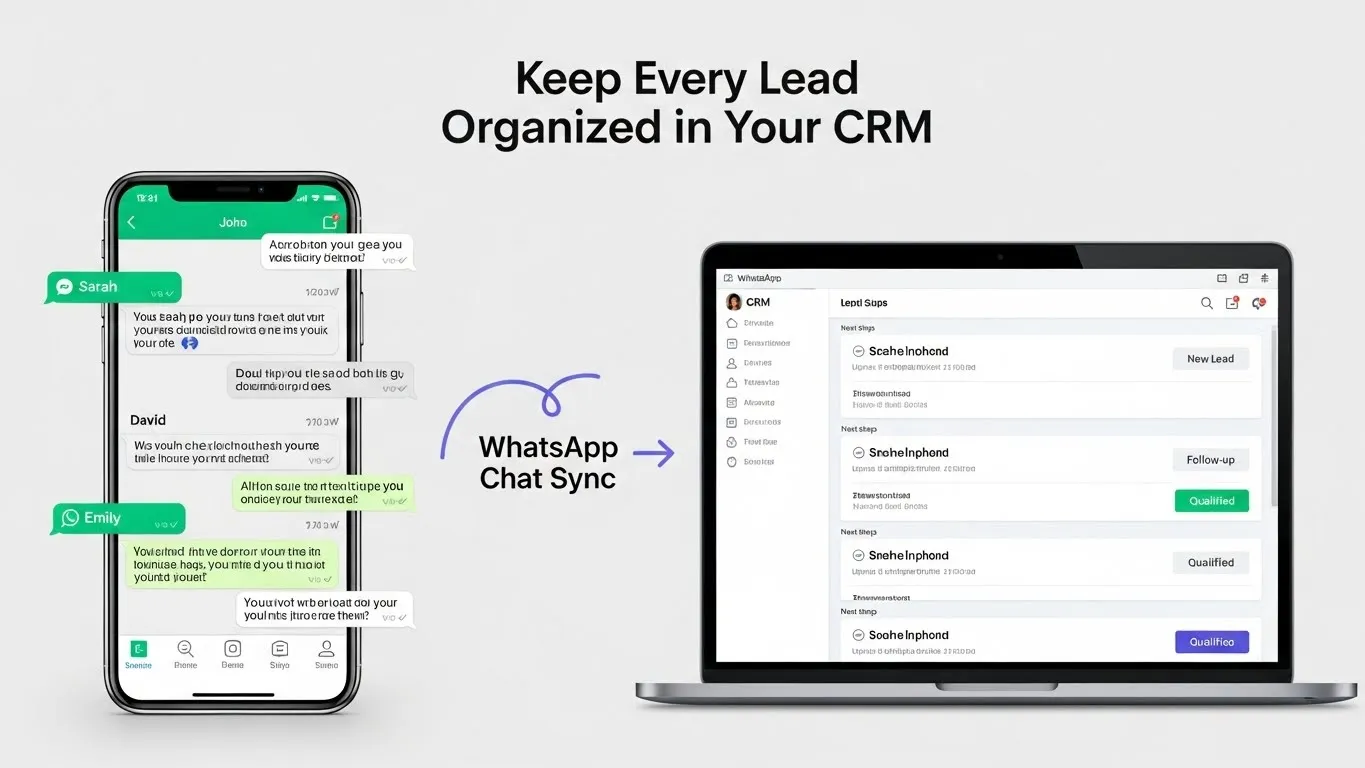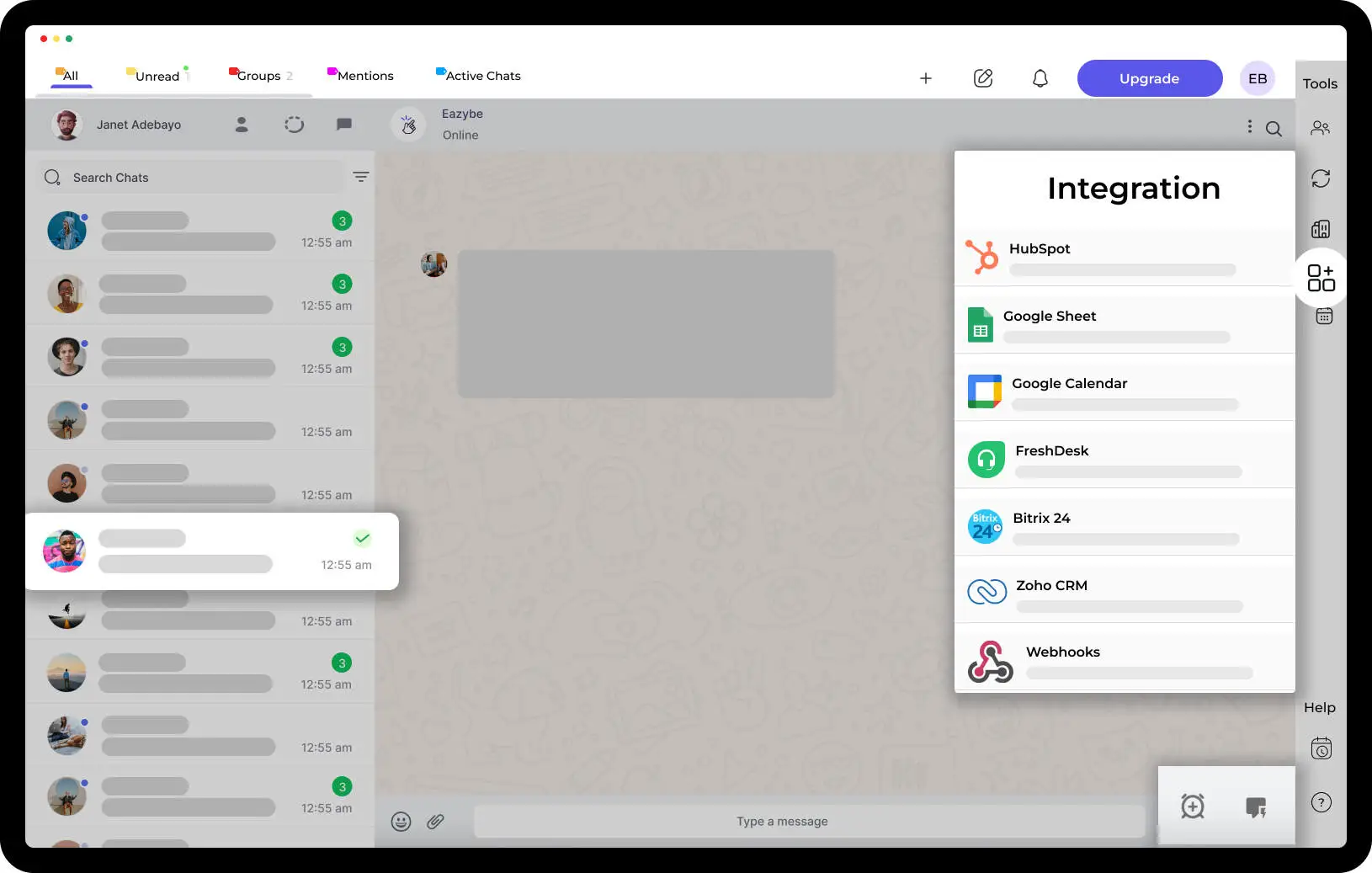
How To Create Marketing & Sales Funnel With Eazybe

As a business owner, you know that generating sales and revenue is the lifeblood of your organization. However, converting leads into paying customers, or prospective customers, can be challenging, especially if you don't have a clear strategy in place. This is where lead generation and a sales funnel, or sales cycle, comes in handy. In the dynamic landscape of business-to-business (B2B) interactions, understanding the intricacies of the marketing and sales funnel, also known as the customer’s journey or customer experience, is crucial for success. This comprehensive guide will delve into the core concepts, stages, and strategies surrounding lead generation and the best way to optimize the marketing and sales funnel, shedding light on its significance in driving conversions and maximizing revenue by helping you understand what they need to move to the next step in the user experience and stay top of mind.
What is a Marketing and Sales Funnel?
A marketing and sales funnel is a visual representation of the customer journey, from initial awareness to making a purchase. It consists of different stages, such as awareness, interest, consideration, and decision, guiding prospects through the sales process and ultimately converting them into customers.
What is A Sales Funnel?
The terms "marketing funnel" and "sales funnel" are often used interchangeably, but they represent distinct phases of the customer journey. The marketing funnel primarily focuses on creating awareness and interest, while the sales funnel, also called a purchase funnel, narrows down to converting leads into customers. A sales funnel is a visual representation of the journey from your prospect’s first contact with you until a completed purchase. It helps your sales team understand where they need to follow up or alter the sales process due to drop off in the funnel shape. It helps you identify the different stages of the marketing funnel, including the sales funnel stages, and create targeted campaigns to appeal to customers at each stage, utilizing various marketing channels, including Google search and other search engines. In this article, we'll show you how to create a sales funnel using the EazyBe Chrome Extension, which can help businesses weed out unqualified prospects by requiring potential customers to go through a series of steps eventually leading to a purchase with the assistance of the marketing team.
Let's explore each funnel individually to grasp their unique roles in the B2B realm.
Marketing Funnel:
The marketing funnel initiates the customer journey by building brand awareness and capturing the attention of potential buyers. It encompasses stages such as:
- Awareness: Introducing your brand to the target audience.
- Interest: Fostering curiosity and engagement.
- Consideration: Guiding prospects to explore your products or services.
Effective content is the linchpin of the marketing funnel, compelling prospects to move seamlessly from one stage to the next.
Sales Funnel:
As prospects transition from the marketing funnel, they enter the sales funnel, where the focus shifts towards conversion and closing deals. The key stages are:
- Lead Qualification: Assessing the potential of leads generated in the marketing phase.
- Proposal: Presenting tailored solutions to meet the prospect's needs.
- Closing: Finalizing the deal and transforming a lead into a paying customer.
Uniting Forces: B2B Marketing and Sales Funnel Integration
In the B2B realm, aligning marketing and sales efforts is paramount. A seamless transition between the marketing and sales funnels ensures that leads generated by marketing efforts are effectively nurtured and converted by the sales team. Collaboration between these departments is crucial for a synchronized and efficient approach.
Crafting Compelling Content for the Sales Funnel
Content is the backbone of both marketing and sales funnels. From informative blog posts and engaging social media content in the marketing phase to persuasive sales presentations and case studies in the sales phase, the right content at each stage can significantly impact the decision-making process.
Navigating the Stages of the Marketing and Sales Funnel
Understanding the unique stages of both funnels allows businesses to tailor their strategies accordingly. From creating awareness in the marketing funnel to providing personalized solutions in the sales funnel, a strategic approach at each step enhances the likelihood of conversion.
The Flow of Success: Simplifying the Sales Funnel
In simple terms, the sales funnel represents the journey a prospect takes from being aware of a product or service to making a purchase. The flow involves guiding potential customers through stages, addressing their needs and concerns, and ultimately closing the deal.
Steps To Use EazyBe As Your Sales Funnel
Step 1: Install the EazyBe Chrome Extension
To get started, you'll need to install the EazyBe Chrome Extension. This powerful tool allows you to track leads, monitor sales, and set reminders, all within your WhatsApp Web. It's also a great sales closing tool, as it integrates with WhatsApp, WhatsApp Web, and the Chrome WhatsApp Extension.
Step 2: Identify Your Customer Stages
Before you can create a sales funnel, you need to identify the different stages of your customer journey. This will help you tailor your messaging and offers to each stage, increasing your chances of converting leads into sales.
Stages Of Marketing/Sales Funnel- Typically, there are four stages of the marketing funnel:
- Awareness: The customer becomes aware of your brand and products.
- Interest: The customer shows interest in your products or services.
- Decision: The customer considers purchasing your product or service.
- Action: The customer makes a purchase.
Step 3: Create Targeted Campaigns
Now that you know the different stages of your customer journey, you can create targeted campaigns to appeal to customers at each stage. For example, for customers in the awareness stage, you might create a campaign that focuses on building brand awareness and highlighting your unique selling points.
For customers in the interest stage, you might create a campaign that offers free trials, demos, or samples to encourage them to try your product or service. For customers in the decision stage, you might create a campaign that offers special discounts or promotions to encourage them to make a purchase during the conversion stage. Creating an exceptional customer service experience, including through email marketing and customer support, is also crucial during this phase to inspire customer confidence in their buying decisions and create satisfied customers. Additionally, implementing loyalty programs and customer testimonials, which serve as social proof, can be beneficial in the advocacy stage, making it easier for your customers to refer your product to their friends and become brand advocates through targeted marketing campaigns.
Step 4: Use EazyBe to Monitor Sales
EazyBe allows you to monitor your sales in real-time, so you can quickly identify any potential issues and make adjustments as needed. You can also use EazyBe to track your leads and set reminders, so you never miss an opportunity to follow up with a potential customer.
Step 5: Integrate WhatsApp as Your Sales Tool
One of the best features of EazyBe is its flawless integration with WhatsApp. WhatsApp is an incredibly powerful sales tool, as it allows you to communicate directly with potential customers in a more personal way.
For more details on how to create funnels , click here.
Step 6: Utilize WhatsApp's Unlimited Storage and File Send Features
WhatsApp is also a great tool for sharing files and documents with potential customers. Unlike traditional email, WhatsApp has unlimited storage and allows you to send large files without any issues. This can be a game-changer for businesses that need to share large files with clients or customers.
Step 7: Follow Up and Close the Sale
Finally, it's important to follow up with potential customers and close the sale. EazyBe makes this process easy by allowing you to set reminders and track your sales progress in real-time. You can also use WhatsApp to send personalized messages and offers to potential customers, increasing your chances of closing the sale and using a lead magnet to capture their email addresses and build an email list.
In conclusion, creating a sales funnel is essential for any business that wants to increase its revenue and grow its customer base. By using the EazyBe Chrome Extension, you can create a systematic approach to guiding potential customers through the buying process
How To Install EazyBe Chrome Extension
Step 1: Install the EazyBe Chrome extension
The first step is to install the EazyBe Chrome extension. You can do this by visiting the Chrome Web Store and searching for "EazyBe" in the search bar. Once you find the extension, click on "Add to Chrome" and follow the prompts to install it.
Or you can click directly Here & install the World’s best Chrome Extension directly on your Personal Computer.
Step 2: Open WhatsApp and Sign In
Once the extension is installed, open WhatsApp on your desktop or laptop and sign in using your phone number and verification code.
Step 3: Access the EazyBe Chrome Extension
To access the EazyBe extension, you just have to wait and let our extension do the magic. You will be greeted with a sidebar and a top bar with loads of options available, but you don’t have to worry as all these options will prove their worth as you get familiar with EazyBe’s ecosphere.
Step 4: Set Reminders, Schedule WhatsApp Messages, and Follow-Up with Your Clients Easily on EazyBe!
FAQs
1: What is the primary difference between the marketing funnel and the sales funnel in a B2B context?
A1: The marketing funnel focuses on creating awareness and interest, moving potential clients from brand introduction to consideration. On the other hand, the sales funnel narrows down to converting leads into customers by qualifying, proposing solutions, and closing deals.
Q2: How does content play a role in both the marketing and sales funnels?
A2: Content is crucial in both funnels. In the marketing funnel, it educates and engages prospects, while in the sales funnel, it aids in lead nurturing and persuading potential clients. The right content at each stage enhances the overall customer journey.
Q3: Why is the integration of marketing and sales efforts essential in B2B businesses?
A3: Integrating marketing and sales efforts ensures a seamless transition between the two funnels. This alignment allows for more efficient lead nurturing, qualification, and conversion, maximizing the impact of both departments on the overall business goals.
Q4: Can you provide examples of content suitable for each stage of the marketing and sales funnels?
A4: In the marketing funnel, content includes blog posts, social media content, and informative videos to build awareness and interest. In the sales funnel, content such as case studies, personalized proposals, and targeted presentations help close deals.
Q5: How can businesses ensure a smooth flow through the stages of the marketing and sales funnels?
A5: Understanding the unique stages of each funnel and tailoring strategies accordingly is essential. This involves transitioning seamlessly from creating awareness to providing personalized solutions, ensuring a smooth and logical progression toward conversion.
Q6: What are the key components of a successful sales funnel in simple terms?
A6: In simple terms, a successful sales funnel involves guiding potential customers through stages – from awareness to interest, consideration, and finally, closing the deal. It's about addressing customer needs, building trust, and facilitating a decision-making process.
Q7: How can businesses enhance collaboration between marketing and sales teams?
A7: Regular communication, shared goals, and joint planning sessions are crucial for fostering collaboration. Implementing shared tools and technologies, such as customer relationship management (CRM) systems, can also streamline the exchange of information between the two teams.
Q8: Why is personalized communication important in the sales funnel?
A8: Personalized communication addresses the specific needs and concerns of individual prospects, making them feel valued. This tailored approach increases the likelihood of conversion by demonstrating a genuine understanding of the customer's requirements.



.svg)




